They say you don’t know what you’ve got until it’s gone — and when it comes to sandwiches, that couldn’t be more true. Across the country, regional legends and childhood staples have slowly disappeared from menus, replaced by cookie-cutter combos and trendy takes that just don’t hit the same. But for every forgotten bite of crispy, cheesy, saucy perfection, there’s a story worth telling — and a flavor worth reviving.
Remember the Monte Cristo? That gloriously golden tower of ham, cheese, and French toast flair used to be a diner darling. Or how about the Fluffernutter — that sweet, sticky sandwich of peanut butter and marshmallow that defined countless childhoods? These aren’t just meals. They’re memories, served between two slices of something wonderful.
And they’re not alone. From the beefy brilliance of Buffalo’s Beef on Weck to the wild invention of the Chow Mein Sandwich in Massachusetts, America’s sandwich history is a treasure trove of bold ideas and big flavors. Some faded with time. Others got left behind by changing tastes or health trends. But all of them deserve a seat at the table again.
This isn’t just a list of sandwiches you’ve never heard of (though there are a few surprises). It’s a celebration of culinary creativity — and a call to bring back the bold, the beloved, and the downright bizarre. Because sometimes the best things aren’t new — they’re just waiting to be rediscovered.
So grab a napkin and get hungry. Here are 9 sandwiches we’ve nearly lost… and 10 that need a glorious comeback.
1. The Monte Cristo

Ham and cheese get the royal treatment in this French toast-inspired masterpiece. Imagine biting through the crispy, golden exterior to discover melty cheese and savory ham inside – it’s breakfast and lunch in perfect harmony!
Once a staple on diner menus across America, the Monte Cristo has largely disappeared except in specialty restaurants. The sandwich combines sweet and savory elements, typically finished with a dusting of powdered sugar and served with jam or maple syrup for dipping.
The preparation might seem fussy by today’s standards, requiring egg-dipped bread and careful frying, but the results are worth every minute of effort.
2. Beef on Weck
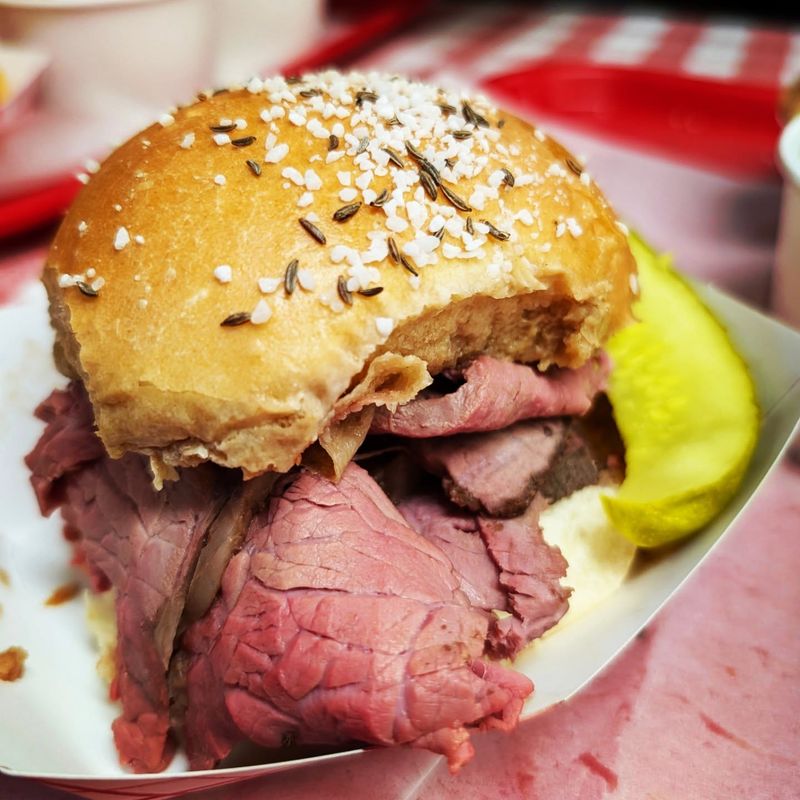
Buffalo, New York’s unsung hero deserves nationwide recognition. This regional masterpiece features thinly sliced roast beef piled high on a kummelweck roll – a kaiser-style bun topped with coarse salt and caraway seeds that create an unforgettable flavor profile.
Traditionally served warm with the top bun dipped in au jus and horseradish sauce on the side, this sandwich delivers a perfect balance of flavors and textures. The salt-studded roll provides a satisfying crunch while the tender beef practically melts in your mouth.
Despite its cult following in western New York, this sandwich remains virtually unknown throughout most of the country.
3. The Fluffernutter
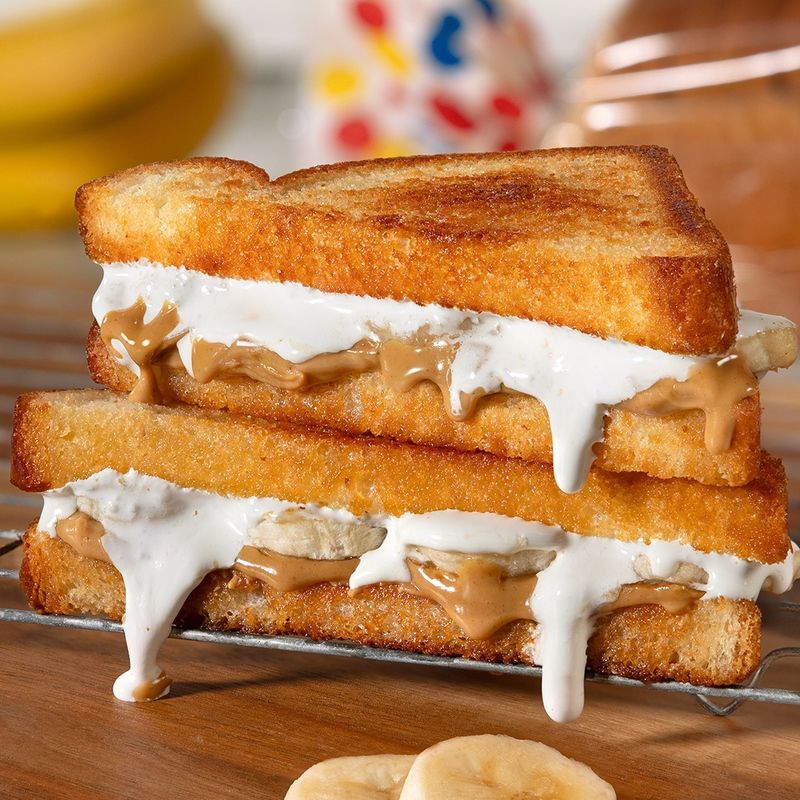
Marshmallow Fluff and peanut butter create childhood magic between two slices of white bread. This New England lunchbox staple has seen its popularity wane as parents seek healthier options, but nothing quite replaces its sweet, sticky joy.
The origins trace back to World War I when a Massachusetts woman named Emma Curtis published a recipe called the “Liberty Sandwich” combining peanut butter and marshmallow cream. By the 1960s, the Fluffernutter had become a cultural phenomenon in the Northeast.
Today’s health-conscious parents might reserve this treat for special occasions, but one bite instantly transports adults back to simpler times of trading sandwich halves at the lunch table.
4. The St. Paul Sandwich
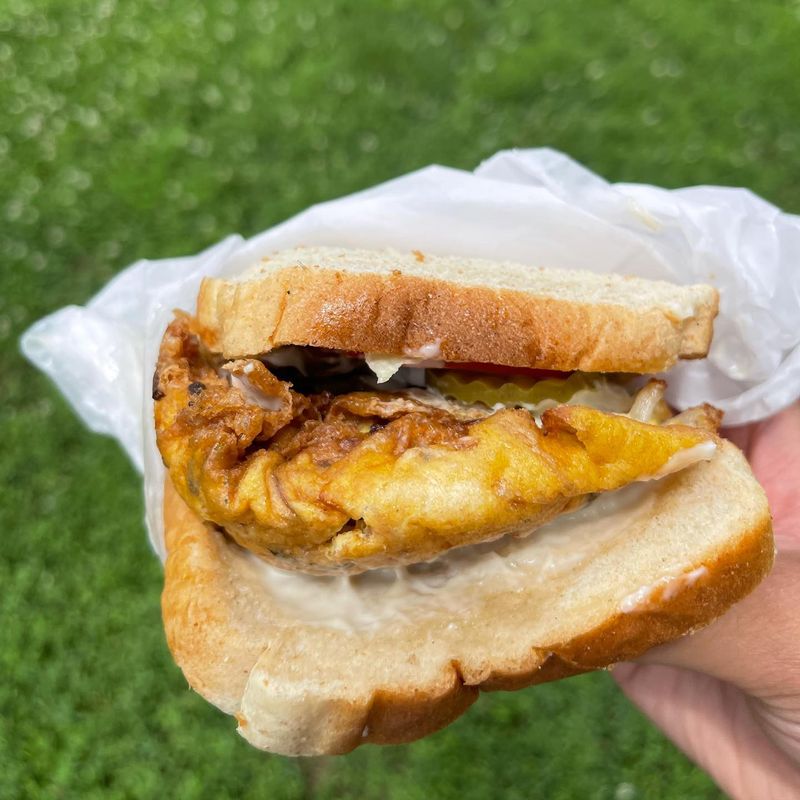
St. Louis, not Minnesota, gave birth to this peculiar fusion creation. An egg foo young patty – that’s right, the Chinese omelet – nestled between two slices of white bread with mayo, pickles, lettuce, and tomato creates a cross-cultural masterpiece few have experienced outside the Midwest.
Legend claims a Chinese-American chef invented it to appeal to American customers, naming it after his hometown in Minnesota. The contrasting textures of crispy-edged egg patty against soft bread, cool vegetables, and creamy mayo create an unexpectedly harmonious bite.
Found primarily in Chinese-American restaurants around St. Louis, this sandwich represents American food innovation at its finest.
5. The Dynamite

Woonsocket, Rhode Island’s best-kept secret combines spicy hamburger meat with a unique blend of spices and vegetables in a torpedo roll. French Canadian influences shaped this regional specialty that packs serious heat and flavor into every bite.
Similar to a Sloppy Joe but with distinct French-Canadian seasonings, the Dynamite features ground beef simmered with onions, bell peppers, and a tomato-based sauce infused with hot pepper. The mixture gets spooned into a soft submarine roll, creating a delightfully messy eating experience.
While beloved in northern Rhode Island, this fiery sandwich remains virtually unknown outside New England, making it a true hidden gem of American sandwich culture.
6. Olive Nut Sandwich
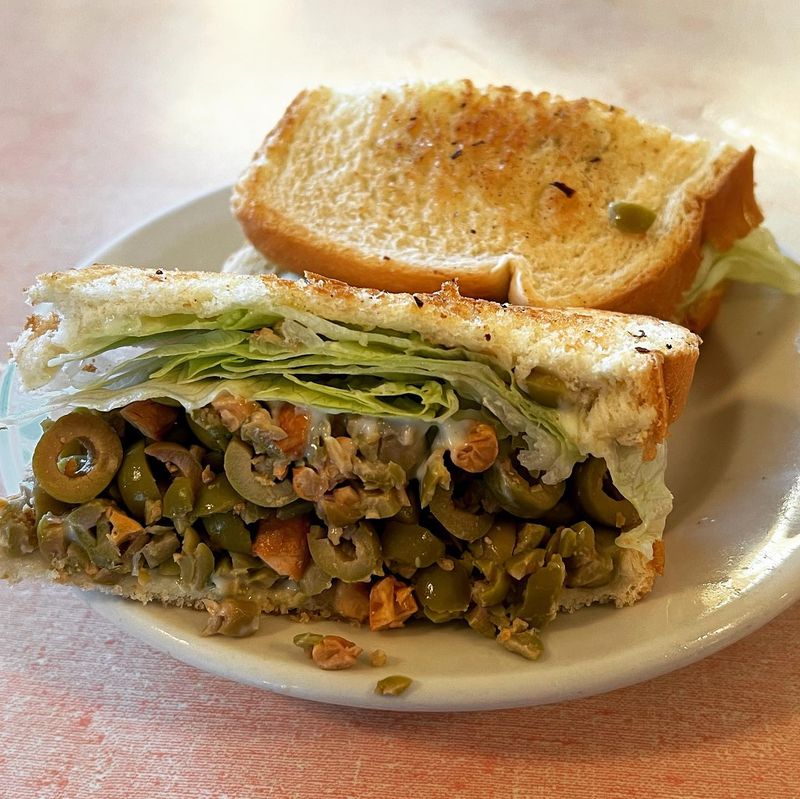
Grandma’s bridge club favorite combined chopped green olives, cream cheese, mayonnaise, and nuts into a spread that defined mid-century ladies’ luncheons. Served on crustless white bread cut into triangles, this sandwich offered sophisticated flavor in dainty form.
The briny olives provided perfect contrast to the rich, creamy base while nuts added necessary crunch. Often served alongside tea in fine china cups, these sandwiches represented a more formal approach to daytime entertaining that’s largely disappeared.
Recipe cards for olive nut spread were once passed down through generations, but as formal luncheons became less common, this delightful sandwich faded from America’s collective memory.
7. The Chow Mein Sandwich
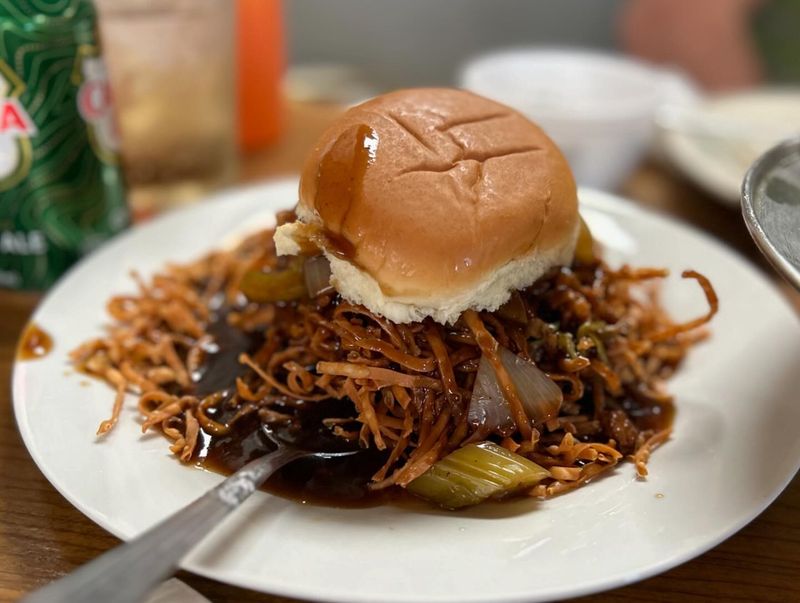
Fall River, Massachusetts created this unusual fusion food: a hamburger bun filled with chow mein noodles and gravy. Chinese-American cuisine meets fast food convenience in this regional oddity that continues to baffle outsiders.
Typically served “strained” (with just the sauce and meat mixture) or “unstrained” (including the crispy noodles), this sandwich is often eaten with a fork and knife. The standard version features chicken chow mein, though beef and other variations exist throughout southeastern Massachusetts.
Nathan’s Famous on Coney Island briefly introduced it to New Yorkers in the 1930s, but today the sandwich remains primarily confined to Fall River and New Bedford, where locals defend it passionately.
8. The Francesinha
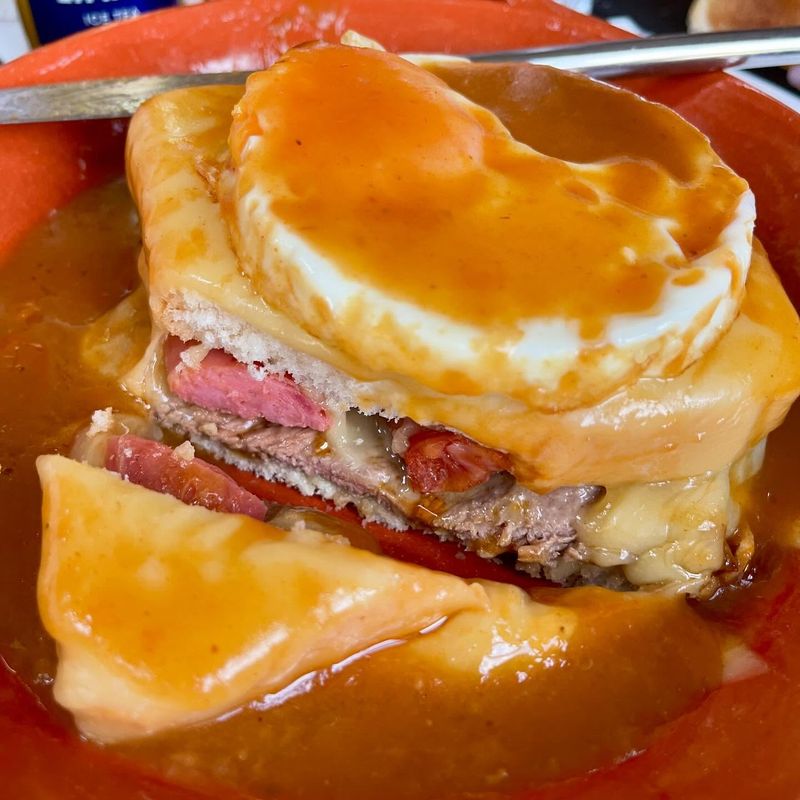
Portugal’s answer to the French croque monsieur takes sandwich construction to spectacular heights. Layers of ham, linguiça sausage, steak, and melted cheese get topped with a spicy tomato-beer sauce that transforms bread into a knife-and-fork affair.
Created by a Portuguese emigrant who returned from France and wanted to adapt French cuisine to Portuguese tastes, the name translates to “little French girl.” While technically not American, this sandwich briefly appeared in Portuguese-American communities before fading from menus.
The combination of multiple meats, melted cheese, and that signature sauce creates a gloriously messy experience that rewards adventurous eaters with an explosion of complementary flavors.
9. The Denver (Western) Sandwich
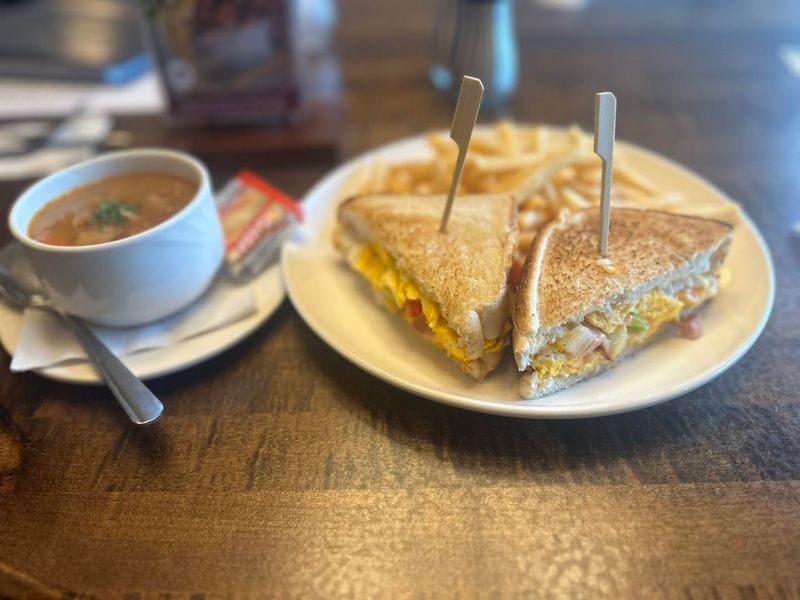
Diner menus once featured this breakfast-lunch hybrid prominently – scrambled eggs with diced ham, onions, and green peppers served between bread. Simple yet satisfying, the Denver sandwich fueled American workers for decades before breakfast sandwiches became dominated by fast-food versions.
Its origins likely trace back to Chinese railroad workers who created egg foo young sandwiches with available ingredients. The Denver omelet remains common on breakfast menus, but its sandwich form has largely disappeared except in old-school diners.
The combination of fluffy eggs, salty ham, and the aromatic crunch of peppers and onions creates a perfectly balanced bite that deserves rediscovery by a new generation.
10. The Horseshoe
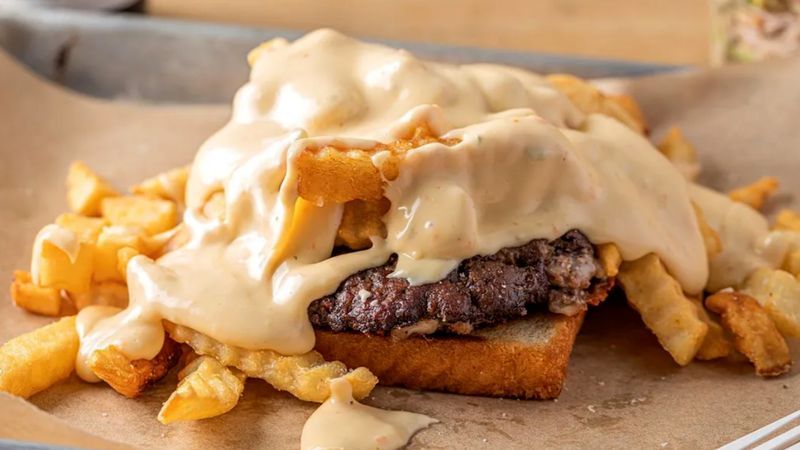
Springfield, Illinois created this magnificent open-faced behemoth: thick toast topped with ham (or other meat), buried under french fries and smothered in cheese sauce. Too enormous for most modern appetites, this regional specialty deserves nationwide appreciation on a slightly smaller scale.
Created in the 1920s at the Leland Hotel in Springfield, the sandwich supposedly resembled a horseshoe, with the meat as the shoe and the french fries as the nails. A smaller version called the “Ponyshoe” exists for those with more modest hunger.
The combination of crispy fries, savory meat, and creamy cheese sauce creates a comfort food trifecta that could easily win hearts beyond Illinois state lines.
11. The Fool’s Gold Loaf
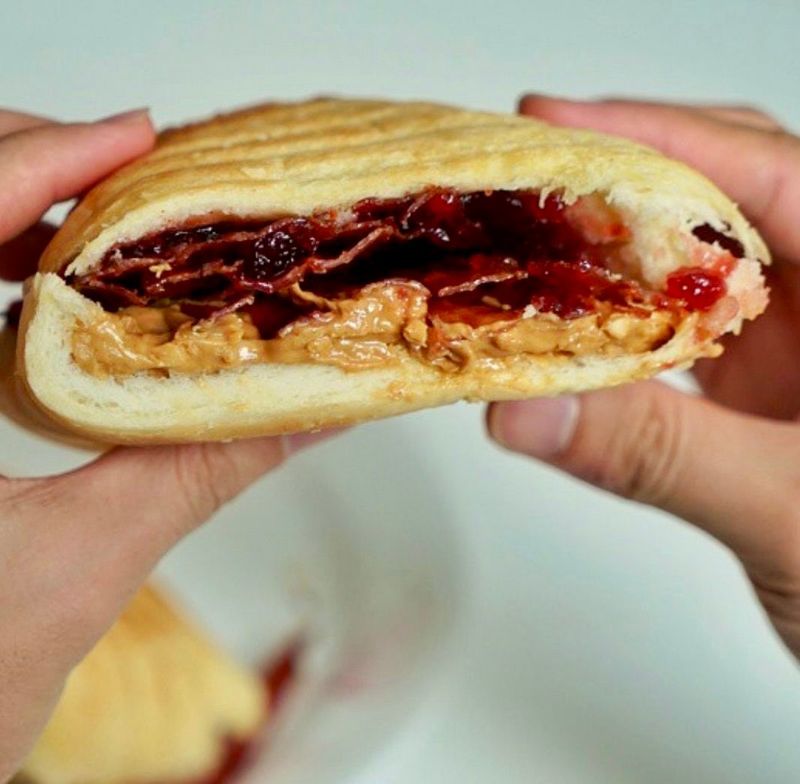
Elvis Presley famously flew his private jet from Memphis to Denver just to eat this outrageous creation. A hollowed-out loaf of bread filled with an entire jar of peanut butter, a jar of jelly, and a pound of bacon represents excess in its purest form.
The King reportedly enjoyed this 8,000-calorie monstrosity with champagne during late-night indulgences. Created by the Colorado Mine Company restaurant, the sandwich became legendary after Elvis and his entourage ordered several during their impromptu midnight visit.
While modern health consciousness might require downsizing this behemoth, a miniature version could capture the sweet-savory magic that captivated one of music’s biggest stars.
12. The Gerber
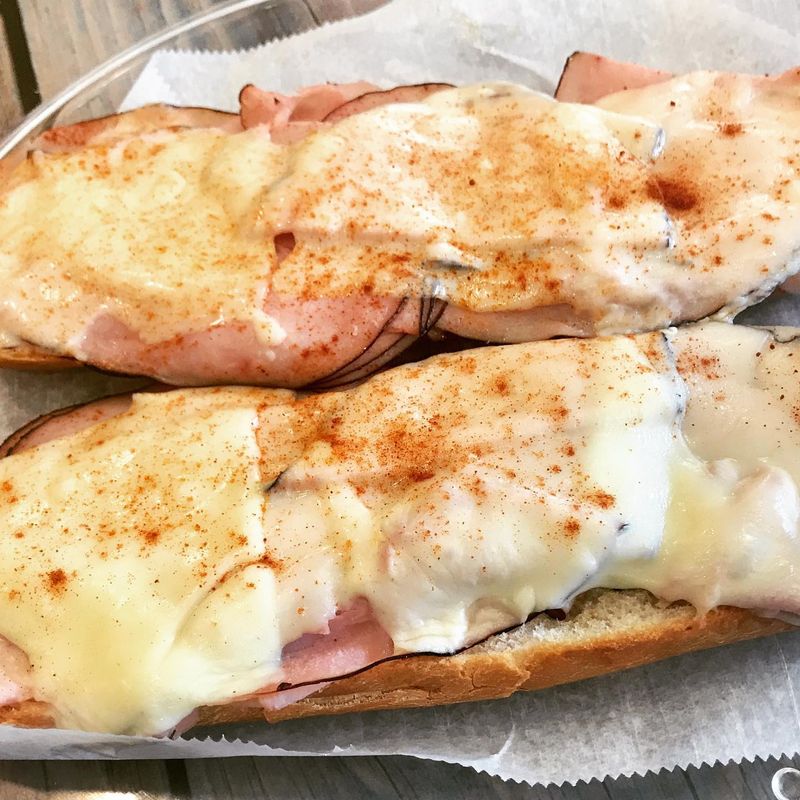
St. Louis created this open-faced marvel that perfectly balances flavors and textures. Garlic butter-slathered French bread gets topped with ham, Provel cheese (a St. Louis specialty), and paprika before a quick trip under the broiler.
Created at Ruma’s Deli in the 1970s, the sandwich was named after a regular customer rather than the baby food company. The combination of crispy bread edges, garlicky undertones, salty ham, and gooey, melted Provel creates an irresistible bite that deserves recognition beyond Missouri.
While Provel cheese (a processed blend of cheddar, Swiss, and provolone) might be difficult to find outside St. Louis, creative substitutions could help this regional specialty gain national attention.
13. The Schmitter
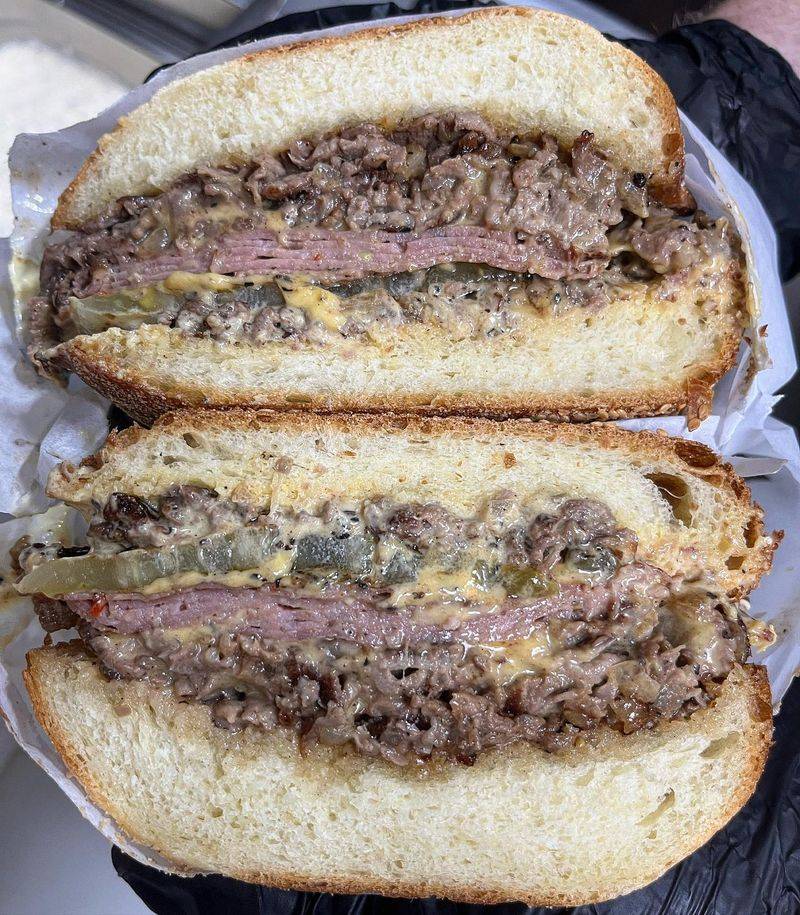
Philadelphia’s lesser-known sandwich masterpiece deserves to step out from the cheesesteak’s shadow. Named after Phillies Hall of Famer Mike Schmidt, this creation piles sliced beef, extra cheese, fried onions, tomatoes, and special sauce onto a kaiser roll.
Born at McNally’s Tavern in Philadelphia’s Chestnut Hill neighborhood, the Schmitter elevates the cheesesteak formula with the addition of grilled salami and tomato. The special sauce – similar to Russian dressing – adds tangy complexity that balances the rich, savory elements.
While available at Philadelphia’s Citizens Bank Park during baseball season, this sandwich deserves year-round national recognition for its perfect balance of familiar flavors with unique tweaks.
14. The Pilgrim
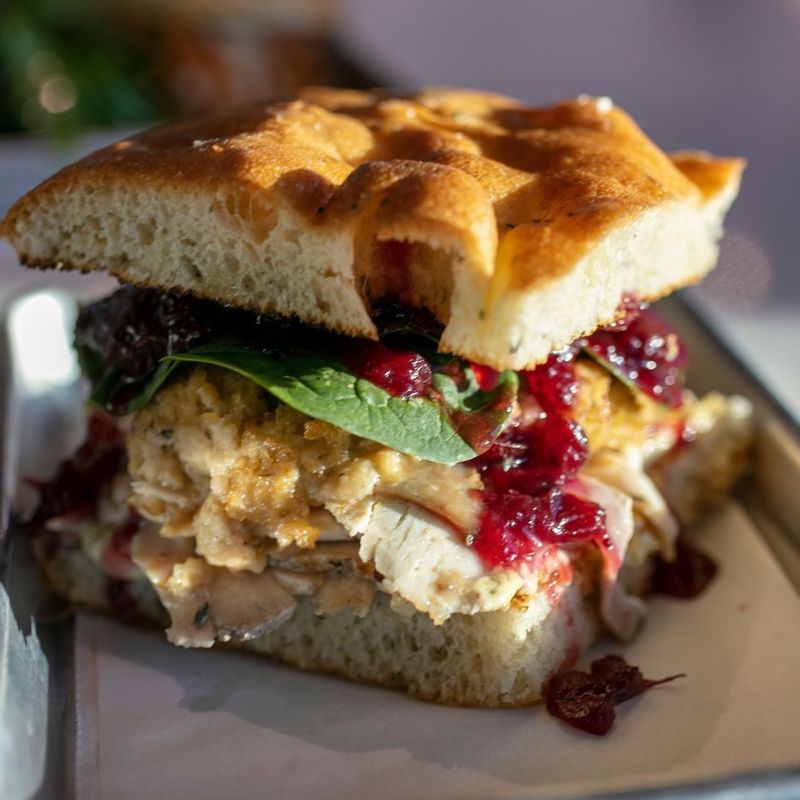
Thanksgiving leftovers inspire this year-round delight that combines roasted turkey, stuffing, and cranberry sauce on hearty bread. While available seasonally at some sandwich shops, this perfect balance of savory and sweet deserves permanent menu status nationwide.
Sometimes called the Bobbie or the Thanksgiving sandwich, regional variations might include gravy, mayo, or different bread choices. The combination works because it captures the beloved flavors of America’s favorite food holiday in portable form.
The contrast between warm turkey, soft stuffing, and cool, tangy cranberry creates a multi-dimensional experience that satisfies nostalgic cravings without requiring hours of holiday cooking.
15. The Jibarito
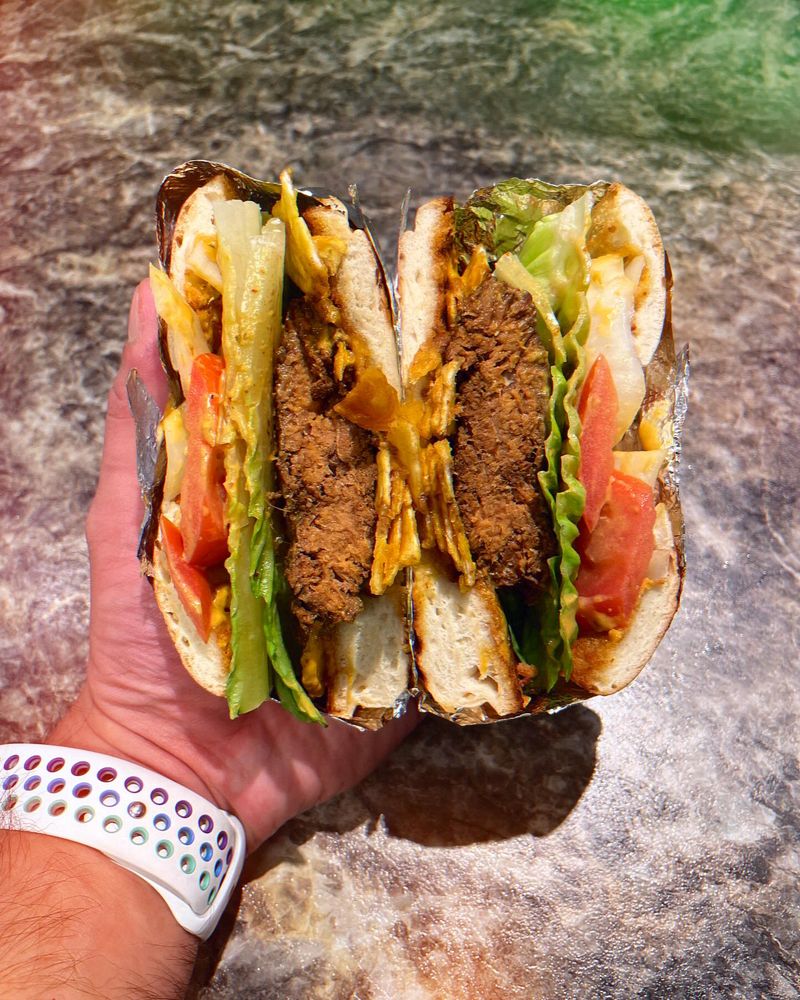
Chicago’s Puerto Rican community created this revolutionary sandwich that replaces bread with flattened, fried green plantains. Filled with garlic-marinated steak, lettuce, tomato, and mayo, the Jibarito offers a gluten-free option with tropical flair.
Invented in 1996 at Borinquen Restaurant in Chicago’s Humboldt Park neighborhood, the name means “little hillbilly” in Spanish. The plantain “bread” creates a satisfying crunch that traditional sandwiches can’t match, while providing a subtle sweetness that complements savory fillings.
Beyond the traditional steak version, chicken and vegetable variations offer versatility that could help this innovative creation spread beyond the Windy City.
16. The Pambazo
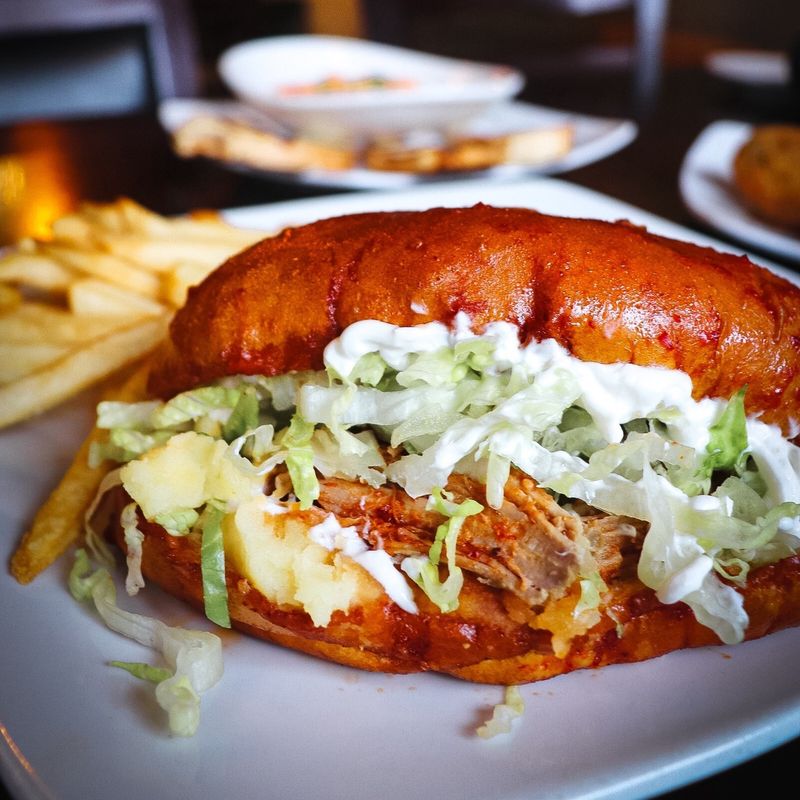
Mexico’s crimson-stained sandwich masterpiece deserves recognition north of the border. A guajillo chile-soaked roll filled with potato and chorizo creates a messy, spicy experience unlike anything in mainstream American sandwich culture.
After dipping the bread in guajillo sauce, it’s lightly fried until crisp before being filled with the potato-chorizo mixture, lettuce, cream, and cheese. The result is a vibrant red exterior that stains fingers and delights taste buds with complex chile flavors.
While found in Mexican communities throughout the US, this sandwich remains largely unknown to mainstream diners who would surely embrace its bold flavors and striking appearance.
17. The Walleye Sandwich
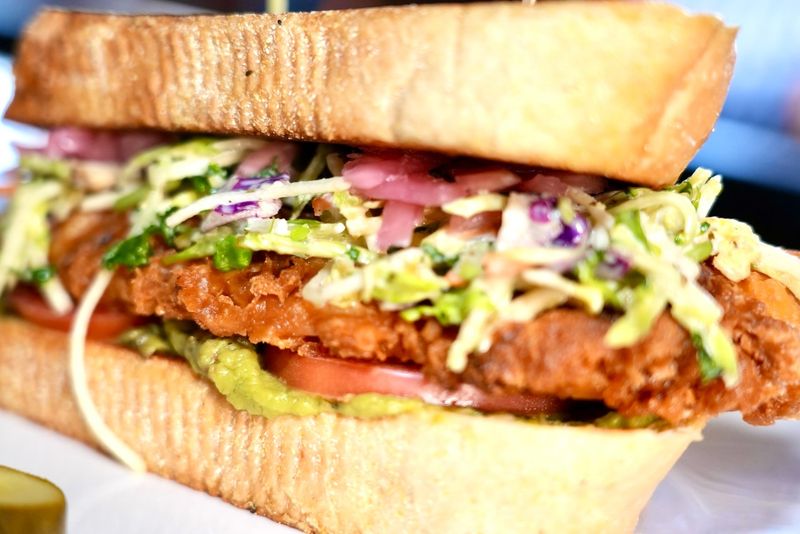
Minnesota’s favorite freshwater fish deserves nationwide sandwich fame. Lightly breaded walleye fillets on a soft bun with simple toppings like lettuce, tomato and tartar sauce showcase this delicate, flaky fish perfectly.
Found throughout the Upper Midwest during fishing season, the walleye sandwich represents regional American cuisine at its finest. The mild, sweet flavor of this freshwater fish provides a welcome alternative to typical fish sandwiches made with cod or pollock.
Sustainability concerns could be addressed through careful sourcing or even farm-raised walleye, allowing this regional specialty to swim into national waters without depleting natural resources.
18. The Hot Brown

Louisville’s decadent open-faced turkey sandwich smothered in Mornay sauce deserves a nationwide comeback. Created at the Brown Hotel in 1926, this knife-and-fork affair transforms leftover turkey into a luxurious meal topped with bacon and tomatoes.
The creamy Mornay sauce – essentially a cheese-enhanced béchamel – elevates this sandwich to gourmet status. After assembly, the entire creation gets broiled until the sauce bubbles and develops golden-brown spots.
While labor-intensive compared to most sandwiches, simplified versions could help this Southern classic find new fans beyond Kentucky. The combination of comforting flavors with elegant presentation makes it perfect for modern restaurant menus.
19. The Barros Luco
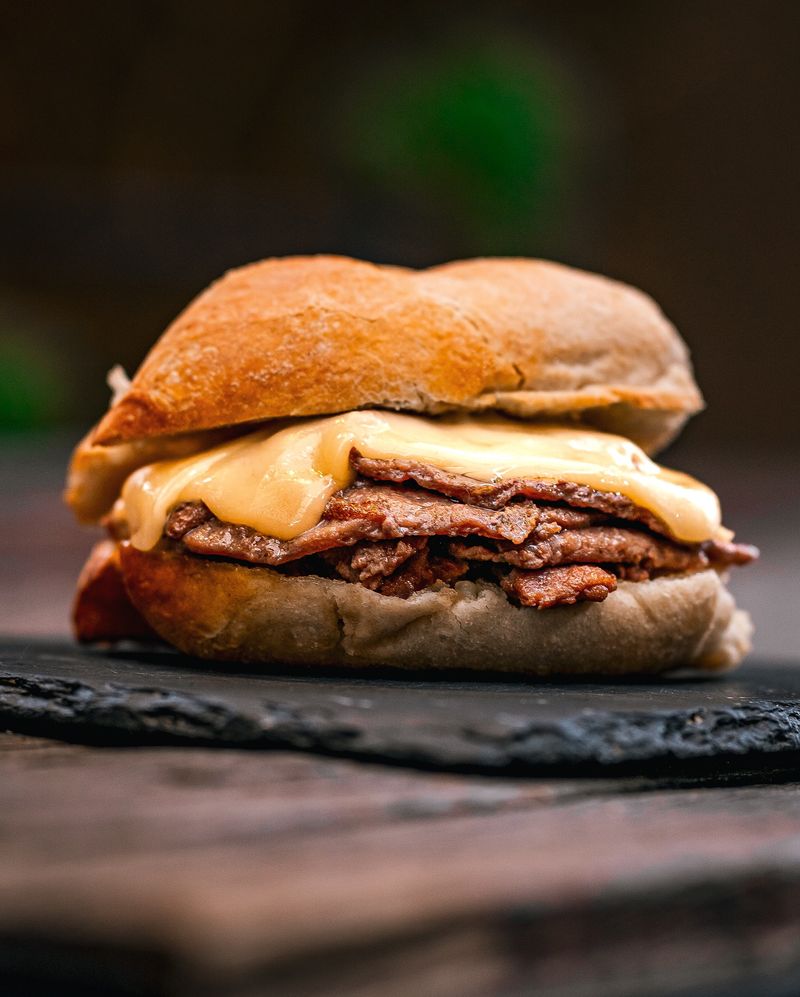
Chile’s answer to the Philly cheesesteak combines thinly sliced beef and melted cheese in a simple yet satisfying package. Named after former Chilean president Ramón Barros Luco who regularly ordered it at a Santiago restaurant, this sandwich proves that sometimes less is more.
The traditional version features thinly sliced beef and melted cheese (usually Chilean mantecoso or something similar to mozzarella) on a crusty roll. Some variations include avocado or tomato, but purists insist on the beef-cheese combination alone.
With Americans embracing global food trends, this straightforward South American sandwich could easily find fans looking for alternatives to typical sandwich fare.
Leave a comment